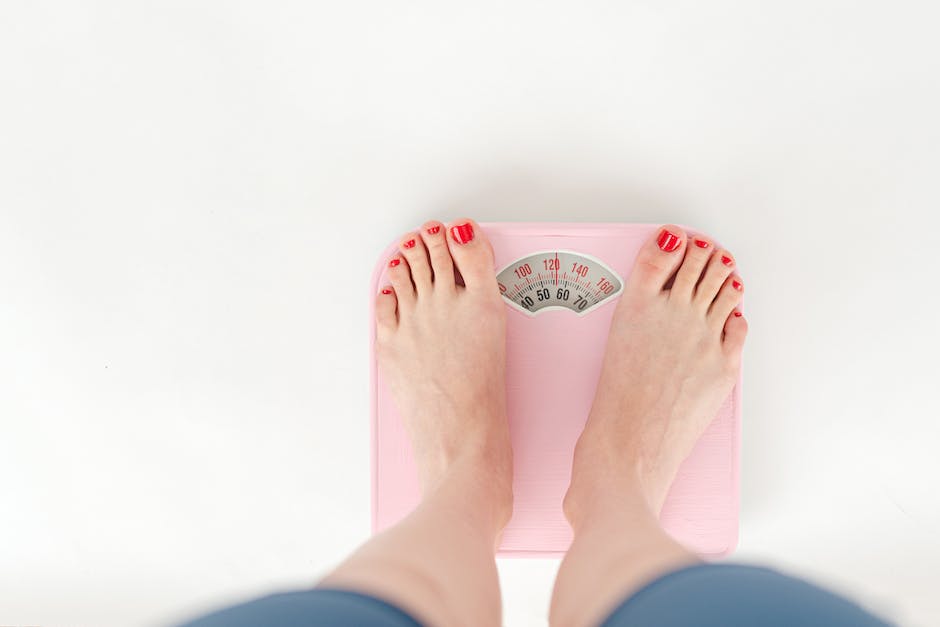Balanced Diets & Essential Nutrition for Women's Health

In the intricate and dynamic landscape of health and wellness, nutrition plays a paramount role in safeguarding and nurturing our overall well-being. For women, it is especially significant given their physiological and hormonal differences, which necessitate specific nutritional considerations. Through a detailed exploration of women's nutrition, this analysis unveils the foundational concepts, emphasizing aspects like menstruation, pregnancy, and menopause. By enlightening ourselves on the optimal balance of macronutrients and micronutrients, developing wholesome diets and meal plans, and understanding the impacts of weight management, eating disorders and lifestyle choices, we can arm ourselves with decisive knowledge for healthier living.
Understanding Female Nutrition
Unique Dietary Needs of Women
In terms of nutrition, women have distinct needs due to the physiological changes they experience throughout their lifespan. These changes occur especially during menstruation, pregnancy, and menopause and demand a higher intake of particular nutrients. It's crucial to understand the necessity of these nutrients to maintain a balanced diet and healthy lifestyle.
Menstruation and Diet
During menstruation, women may experience significant loss of iron through bleeding. Iron is critical for creating red blood cells and transporting oxygen to cells throughout the body. A deficiency can cause fatigue, weakness, and impaired immune function. Therefore, menstruating women need to include more iron-rich foods in their diet, such as lean meat, poultry, fish, shellfish, legumes, iron-fortified cereals, and leafy green vegetables.
Pregnancy and Maternal Nutrition
During pregnancy, the nutritional needs of women become even more specific. Not only does the mother need to maintain her own health, but she also needs to provide for the developing fetus. Certain nutrients become paramount during this time:
- Folic Acid: This nutrient is essential to prevent neural tube defects in the baby. Foods rich in folic acid include leafy greens, legumes, and fortified cereals.
- Iron: The need for this mineral increases dramatically during pregnancy to accommodate the mother's increased blood volume and the development of the baby's blood supply.
- Calcium: Plays a critical role in building the baby's bones and teeth. Dairy products, green leafy vegetables, and calcium-fortified foods are excellent sources.
- Protein: Required for the growth of maternal tissue and the fetus. It's abundant in lean meats, poultry, fish, eggs, beans, and nuts.
Moreover, pregnant women are encouraged to consume more calories in general to support the growth and development of the baby.
Menopause and Dietary Needs
With menopause and aging, women's nutritional needs shift again. The metabolic rate decreases, so older women may need fewer calories. Yet the demand for certain nutrients such as calcium and vitamin D increases due to higher risks of osteoporosis. Therefore, post-menopausal women should consume low-fat dairy products, canned sardines, salmon, fortified cereals, and vitamin D supplements if needed.
Moreover, to maintain heart health, women experiencing menopause are advised to limit their intake of saturated and trans fats, while increasing omega-3 fatty acids found in fish, walnuts, and flaxseeds.
Indispensable Nutrients for Women
Broadly speaking, essential nutrients for women include vitamins A, C, D, E, K, and B vitamins, along with minerals like calcium, iron, and folic acid. While these needs can generally be met with a balanced diet, some women may need supplements, particularly if they're pregnant or if they have dietary restrictions.
In conclusion, it's important to remember that women's dietary and nutritional requirements can vary depending on a number of factors, such as their life stage. Understanding these needs can lead to better health, optimal body function, and lower risk of nutritional deficiencies. Keep in mind, nutrition is not static but a dynamic, ever-changing process that adapts to an individual's circumstances and life stages.

Macronutrients & Micronutrients for Women
Understanding Macronutrients for Women
Yourbody relies on macronutrients to function properly. These consist primarily of carbohydrates, proteins, and fats - all of which need to be consumed in larger amounts compared to other nutrients.
Carbohydrates serve as your primary source of energy. They power the brain, kidneys, heart muscles, and the central nervous system. To maintain a well-balanced diet, aim to incorporate complex carbohydrates, like fruits, vegetables, whole grains, and legumes, into your meals while limiting your intake of simple carbohydrates, such as sugars and white flour.
Proteins are key to tissue build-up, maintenance, and repair. Vitally, they support the growth and development of muscles, bones, skin, and hair. To ensure you're getting enough protein, consider adding more lean protein sources - like fish, poultry, beans, and tofu - to your meals.
Often misunderstood, fats are essential for good health. They support cell growth, protect your organs, and aid in nutrient absorption. Not all fats are created equal, though. Try to consume more healthy, mono and polyunsaturated fats found in foods like avocados, nuts, seeds, and fish.
Micronutrients for Women
Micronutrients denote the vitamins and minerals that the body needs in smaller amounts. Despite being required in smaller quantities, their role in maintaining optimal health and preventing diseases is paramount.
Vitamins are organic compounds required by the body to perform various metabolic activities. Essential vitamins for women include Vitamin A (for eye health and immune function), Vitamin B9 (folic acid, essential for pregnant women for neural tube formation), and Vitamin D (for bone health and immune function).
Minerals, too, play an essential role in women's health. Iron is necessary for the synthesis of red blood cells and preventing anemia. Calcium and magnesium are vital for bone health and muscle function, respectively. Trace minerals like iodine, zinc, and selenium further contribute to the function of numerous bodily processes.
Nutrition's Role in Women's Health
It's essential for women to grasp the crucial part that a well-balanced diet, rich in both macronutrients and micronutrients, plays in their overall health. Benefits of this diet can manifest in several ways, such as heightened energy levels, robust immunity, and the enhancement of skin and hair health, while fostering better physical and mental well-being.
On the downside, skewed consumption can have dire health implications. Overeating carbohydrates, especially in form of refined sugars and grains, can lead to unwanted weight gain and potentially type 2 diabetes. Inadequate protein intake may result in muscle loss, a weakened immune system, and slow healing. A deficiency in consuming healthy fats can adversely affect heart health, cell growth, and the absorption of vitamins.
In the context of micronutrients, shortages can bring about intense health problems. Conditions such as anemia can arise from iron deficiency, weak bone structure from low calcium and compromised immunity due to a vitamin shortage, amongst other health concerns.
Therefore, it’s fundamental that a balanced diet with the right balance of macronutrients and micronutrients is maintained for optimal women's health. Emphasizing nutrient-rich, whole foods while limiting processed and refined alternatives can enhance a woman's nutritional status significantly. Regular consultations with healthcare providers or dietitians can assist in maintaining appropriate dietary habits and address potential nutritional deficiencies before they develop into major health issues.

Healthy Diets & Meal Planning for Women
Grasping the Foundations of Nutrition
The key components that make up a nutritious diet for women are protein, carbohydrates, healthy fats, and a variety of vitamins and minerals. Proteins, which are integral for muscle repair and growth, can be found in foods like poultry, fish, eggs, and various nuts and seeds. Carbohydrates are essentially the body's energy source and are classified as either complex (found in foods like whole grains, beans, and fruits) or simple (found in processed and sugary foods). Healthy fats, which are essential for brain function, can be found in sources like avocados, fish, and nuts. Lastly, micronutrients, such as vitamins and minerals, contribute to several different functions, including boosting the immune system and playing a key role in women's reproductive health.
Creating Balanced Meals
Balancing meals means eating a variety of foods that give you the nutrients you need to maintain your health, feel good, and have energy. For instance, a balanced meal for breakfast might include a serving of whole grains (like whole wheat bread or oatmeal), a serving of lean protein (like eggs or lean meat), and a serving of fruit for additional vitamins and fibre. A lunch could include a salad with a variety of vegetables, lean protein such as chicken or tofu, and a healthy fat like avocado or olive oil.
Portion Control & Variety
Portion control is crucial for maintaining a healthy weight or losing weight if needed. One effective strategy is to shrink portion sizes of high-calorie foods and increase the portions of low-calorie, nutrient-rich foods. Remember, achieving great nutrition is as much about the quality of food as it is the quantity. Including a variety of foods in your diet can help ensure that you get a wide range of nutrients. Overtime, this will also keep your meals interesting and flavorful, preventing you from getting bored.
Nutrition for Women at Different Ages
In your 20s and 30s, women need to focus on getting enough calcium and iron. Calcium is essential for developing peak bone mass and preventing osteoporosis. Iron is important to support menstrual function and pregnancy. In your 40s and 50s, women may need to adjust calorie intake and increase vitamin D and B12 intake due to changes in metabolism and the onset of menopause. Post-menopause, it's important to provide nutrients that support bone health, muscle mass and heart health.
Meal Planning Based on Activity Levels
Depending on lifestyle and physical activity level, caloric allotments can change. Female athletes or highly active women need significantly more calories than sedentary women, due to the energy needed to perform their activities and recover properly. For example, moderately active women should aim to consume 1,800-2,200 calories per day with appropriate proportions of protein, carbohydrates, and healthy fats. Those leading a sedentary lifestyle will want to keep their calorie intake lower, around 1,600-1,800 per day.
Ladies' Dietary Choices for Varying Routines
If your lifestyle is packed with activities, consider fueling your day with an omelette enriched with lean protein and vegetables, complemented with a side of fruit for breakfast. Lunch could be a satiating salad topped with chicken, nuts, and seeds. End the day with a delectable dinner of oily fish, like salmon, paired with roasted vegetables and quinoa.
For those leading a balanced lifestyle, your breakfast can comprise nutritious whole grain toast with almond butter and a banana. Enjoy a wholesome lunch with a bowl of vegetable soup, complemented by a side of lean protein, like chicken or tofu. For dinner, focus on lean protein such as turkey, balanced with an ample portion of vegetables and brown rice on the side.
If you find yourself living a more sedentary lifestyle, kick your day off with a simple yet nutritious Greek yogurt loaded with fresh berries for breakfast. Consider a light salad featuring lean protein like salmon for lunch, and finish up your day with a modest serving of lean protein like chicken, a healthy portion of steamed veggies for dinner, and a light snack like fruit or nuts in between.

Managing Weight & Eating Disorders
Mastering Weight Maintenance for Women
Maintaining a healthy weight is crucial for a woman's overall health and well-being since it can help to minimize the risk of chronic conditions such as diabetes, heart disease, and certain cancers. Weight management is not just about weight loss, but also about finding a healthy balance between the calories consumed and those burned. According to the Dietary Guidelines for Americans 2020-2025, incorporating a balanced diet filled with fruits, vegetables, lean proteins, whole grains, and low-fat dairy can aid in maintaining a healthy weight. Regular exercise too is an indispensable component of weight management. For adults, the general recommendation is a minimum of 2.5 hours of moderate-intensity aerobic activity or 1.25 hours of high-intensity aerobic activity each week, coupled with muscle-strengthening activities conducted twice a week.
Eating Disorders among Women
Among the various challenges women face concerning nutrition and diet, eating disorders happen to be quite common. These conditions involve extreme emotions, attitudes, and behaviors surrounding weight and food. Eating disorders can be devastating both emotionally and physically, leading to serious health consequences if not addressed timely. Common types of eating disorders among women include bulimia nervosa, anorexia nervosa, and binge eating disorder.
Bulimia Nervosa
Bulimia nervosa often manifests as a cycle of eating large amounts of food (binge-eating), followed by compensatory behaviors such as vomiting (purging) to prevent weight gain. This compensatory behavior creates an unhealthy cycle that can harm the digestive system and lead to electrolyte and chemical imbalances affecting the heart and other major organ functions. Symptoms include repeated instances of binge-eating, compensation for overeating, and fixation on body shape and weight.
Anorexia Nervosa
Anorexia nervosa is characterized by self-starvation and excessive weight loss. Women with anorexia nervosa may see themselves as overweight, even when they are underweight. Symptoms include extreme thinness, restricted eating, fear of gaining weight, and disturbance in body image. This disorder can impair multiple organ systems and lead to heart, bone, and fertility-related complications.
Binge Eating Disorder
Binge eating disorder is the most common eating disorder in the U.S. Women with this disorder frequently consume large amounts of food but do not try to compensate with purging, dieting, or excessive exercise. This condition often leads to overweight or obesity. Symptoms include eating unusually large amounts of food in discrete time, feeling upset, or guilty after binging.
Overcoming Eating Disorders
Women at any age can overcome eating disorders with professional help, which often includes a comprehensive treatment plan involving medical, nutritional, and psychological therapies. Psychotherapy or talk therapy is one of the most common and successful treatment approaches, including cognitive-behavioral therapy (CBT), family-based treatment (FBT), and interpersonal psychotherapy (IPT). In addition, developing healthy eating habits under the guidance of a dietitian or nutrition expert can also help in the recovery process.
Dietitians commonly create unique meal plans for women suffering from eating disorders that aim to normalize eating patterns, achieve and maintain a healthy weight, restore nutritional health, and create a lifelong balanced relationship with food. Along with this, medical monitoring helps keep track of the woman's physical health while she works towards overcoming the eating disorder.
Throughout these processes, strong social support plays a vital role in healing. Women should be encouraged to seek out support groups where they can connect with others experiencing similar struggles. This creates a sense of community and understanding, enabling a healthier perspective on weight and food.
A holistic approach to Health
Getting a firm grip on maintaining a healthy weight and keeping eating disorders at bay involves a well-rounded understanding of nutrition, the pivotal role of a balanced diet with proper exercise, and the need for psychological backup. The key to preventing and healing lies in an informed, empathetic, and comprehensive strategy.

The Impact of Lifestyle & Exercise on Women’s Nutrition
The Specific Nutritional Requirements for Women
Women's dietary needs present a bit of a difference as compared to men’s, due to their distinctive physiological design. The female body experiences several transitional stages, be it menstruation, pregnancy, or menopause. Each phase brings its unique dietary necessities into play.
During their fertile years, women have an increased requirement for iron—18 mg/day, to be precise, when compared to the 8 mg needed by men. This is to compensate for the quantity lost during the menstrual cycle. It's imperative that women maintain a sufficient intake of both calcium and Vitamin D to thwart the occurrence of osteoporosis, especially during and post-menopause. Women under the age of 50 are recommended to intake 1,000 mg of calcium and 600 IU of Vitamin D every day. These levels spike up to 1,200 mg of calcium and 800 IU of Vitamin D for women crossing their 50s.
Impact of Lifestyle Choices on Women's Nutrition
Certain lifestyle choices, such as smoking, alcohol use, and leading a sedentary life, can greatly impact women's nutrition. Smoking can decrease the absorption of essential nutrients like calcium and Vitamin C. Heavy alcohol use can lead to malnutrition by damaging the liver, which plays a crucial role in nutrient metabolism. Moreover, excessive alcohol can deplete body stores of nutrients, particularly B-vitamins, and potentially disrupt menstrual cycles, affecting hormonal balance and overall women’s health.
A sedentary lifestyle, characterized by prolonged periods of inactivity, has been linked to obesity, heart disease, type 2 diabetes, and certain types of cancers. It can also lead to poor diet choices, overeating or undereating, and can negatively affect metabolism and nutrient absorption.
The Role and Benefits of Regular Exercise
Exercise plays a significant role in women's nutritional health. Regular physical activity helps regulate appetite, energy intake, and metabolism, contributing to weight management and preventing chronic diseases like obesity, heart disease, and diabetes. Also, weight-bearing exercises, such as walking, running, or weightlifting, promote bone health and can help prevent osteoporosis, a common condition in postmenopausal women.
Besides the direct physical benefits, regular exercise has positive effects on mental health, improving mood, reducing stress, anxiety, and depressive symptoms, which are factors that can indirectly impact nutritional status.
While exercise has undeniable benefits, it is crucial for it to coincide with adequate nutrition. Excessive physical activity without proper nutrition increases the risk of amenorrhea(loss of menstrual cycles), bone loss, and other health problems. Active women should maintain a balanced diet rich in complex carbohydrates, lean proteins, healthy fats, and various vitamins and minerals to support their increased energy and nutrient demands.
Consideration of a Balanced Lifestyle
A balanced lifestyle is the key to optimizing women's nutrition. This includes not only healthy eating and regular physical activity but also stress management, adequate sleep, and moderation in alcohol consumption. A balanced diet rich in fruits, vegetables, lean proteins, whole grains, and healthy fats, coupled with regular exercise, adequate sleep, and stress management, forms the foundation of good nutrition and overall wellness.
Avoiding tobacco, minimizing alcohol, and preventing overweight and obesity throughout life can significantly decrease women's risks for poor nutrition and chronic diseases. Health professionals could help guide women in making healthy lifestyle choices, facilitating their path towards better nutrition and health.

Gaining insight into women's nutrition, macronutrients and micronutrients, the implementation of balanced diets, and the correlations between weight management, eating disorders, and lifestyle facilitates an empowering perspective into our health control. As we comprehend these complexities, it becomes evident that nutrition for women is a vibrant tapestry that weaves through every stage of life, manifesting differently based upon age, physiological state, and lifestyle. By making informed diets and exercise choices coupled with proper weight management can significantly influence our wellness journey. Hence, let this guide serve as a stepping stone towards a healthier, nurturer, and fortified future, harnessing the power of nutrition at the core.
